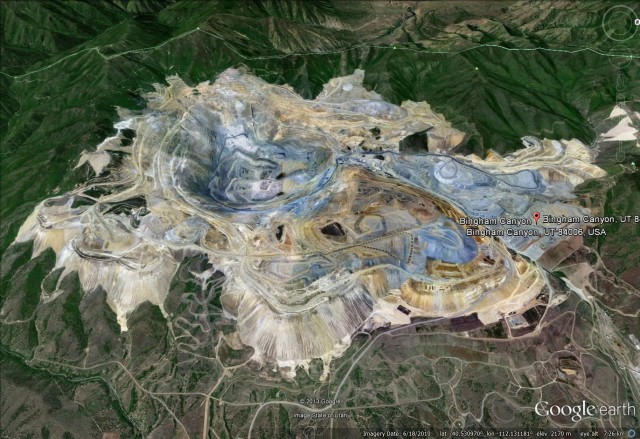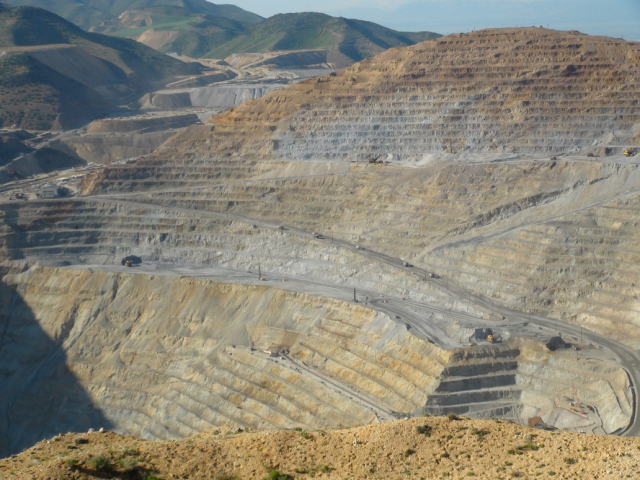30 April 2013
Analysing the Bingham Canyon mine landslide part 1: the landslide source area
Posted by Dave Petley
The Bingham Canyon mine landslide of a few weeks ago is an unusual mass movement. Kennecott Utah have put a set of very high resolution images on their flickr site and have provided permission for me to use them here (with due acknowledgement to them). I thought it would be interesting to take a little time to examine this landslide in more detail. There is a great deal to discuss here, so I am going to break this down into three posts over the next few days.
So lets start by looking at the site from a Google Earth image. This is a vast mine – the excavation is 970 m deep for example:
This image shows the slope that failed before the collapse event. Note the machinery on the haul road for scale:
.
The landslide source area
This Kenncott Utah image shows the source area very clearly:
.
There are a couple of really interesting aspects of this. First, the headscarp has an unusual structure – I have annotated this as point 1 in the image below. This layering looks like a sedimentary structure. I wonder if this might be waste material that has been dumped on the slope? If you compare this with the before image above though this looks to be just a small portion of the headscarp, so was probably not a key factor in the failure event.
.
Second, the base of the landslide (2 in the photograph) is a comparatively planar surface. This would suggest a pre-existing weakness of some sort – maybe a fault? The orientation of this surface would have made the kinematics of failure quite interesting. The landslide could not initially more down dip because of the constraint from the valley wall, such that it would have had to travel slightly along strike, making this a sort of hybrid wedge failure. This structure could provide a hypothesis for the two recorded failure events – the first was a detachment of a lower block, which then released the upper block. This is shown quite nicely from a zoom is on the upper portion of the landslide from the fabulous overview image:
..
It is clear from this that the trajectory of the landslide was controlled by this basal structure. However, a comparatively small amount of material spilled over the lateral boundary as well.
In the next post I’ll take a look at the evidence for the way that the landslide moved, whilst the final one will look at the deposit.







 Dave Petley is the Vice-Chancellor of the University of Hull in the United Kingdom. His blog provides commentary and analysis of landslide events occurring worldwide, including the landslides themselves, latest research, and conferences and meetings.
Dave Petley is the Vice-Chancellor of the University of Hull in the United Kingdom. His blog provides commentary and analysis of landslide events occurring worldwide, including the landslides themselves, latest research, and conferences and meetings.
The basal plane feature and it’s several compatriots are quite visible in the second photo and it appears that the mine has had problems with them in the past. Particularly, with the one on the RHS of the photo between the haul road and the working bench, which would have been a substantial wedge failure in its own right. Rather than mullock, is it possible that the material above the basal plane is more weathered than the surrounding rock with the structure acting as a barrier to the weathering penetrating deeper. The failed section is a lighter orange compared to the remainder of the slope.
It took me a bit to orientate the photos relative to each other as they are taken from different angles and the workshop is not visible in the second photo. But the building on LHS at the top of the haul road of the second photo is the same as the building edge of the slip in the others.